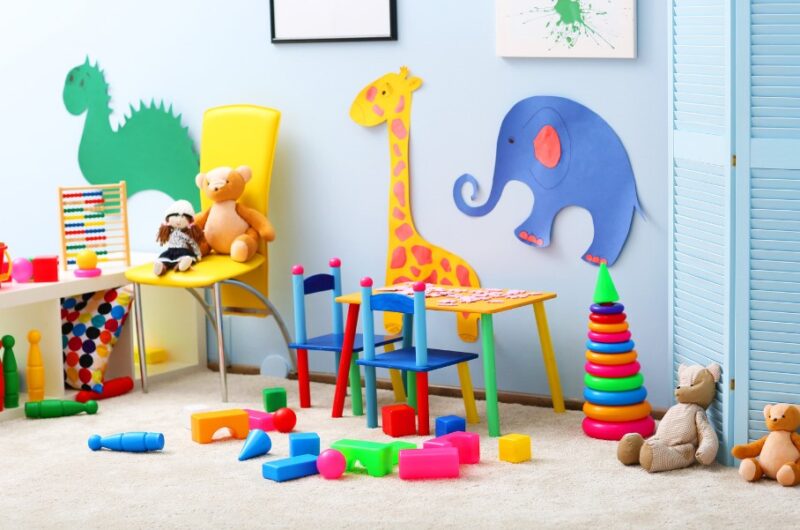In a preschool classroom, structure is the key to fostering a nurturing and educational environment for our youngest learners. It is typically divided into learning centers, such as a block area, dramatic play area, science area, library, and art area.
Children are given free choice to explore the different centers at their own pace. The teacher provides guidance and support and intervenes when necessary.
Preschool classrooms also have a daily schedule that includes group time, center time, outdoor time, and snack time. The schedule provides children with a sense of predictability and routine.
Why is Structure Crucial?
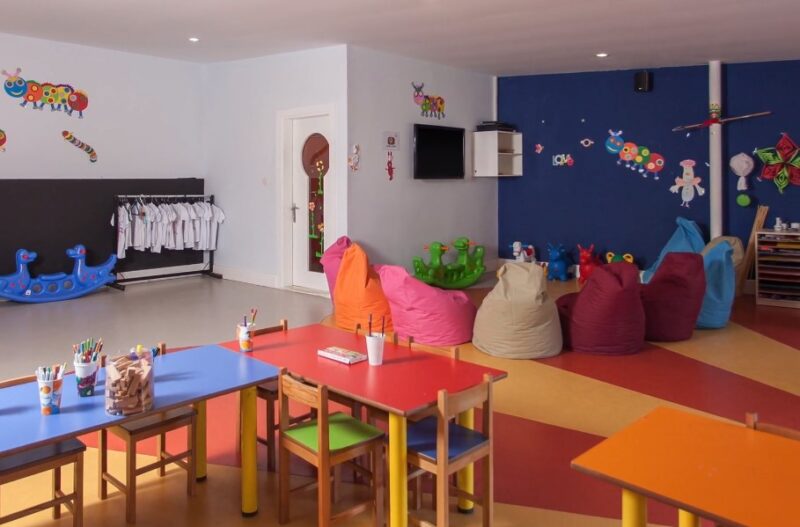
The structure is the backbone of any successful preschool classroom, offering a multitude of invaluable benefits for the young minds that inhabit it. Here’s an in-depth look at why structure is paramount in nurturing the holistic development of preschool children:
Security and Predictability
Preschoolers thrive on knowing what to expect in their environment. A structured classroom routine provides a reassuring sense of security for children, creating a safe and predictable atmosphere where they can comfortably explore and learn.
Within this predictability, they begin to develop the essential life skill of self-discipline.
Social-Emotional Development
Structure plays a pivotal role in fostering positive social-emotional development. It equips children with the tools they need to navigate the complex world of social interactions.
Through structured activities and routines, preschoolers learn invaluable lessons about sharing, taking turns, and resolving conflicts peacefully. This early exposure sets the stage for their future ability to build healthy relationships.
Cognitive Development
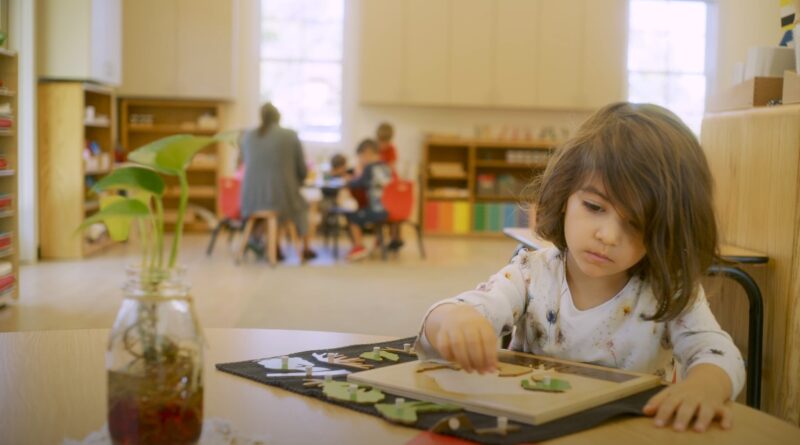
The structured framework of a preschool classroom is like a canvas where young minds paint their understanding of the world. It provides children with a diverse array of learning opportunities, from exploring learning centers to engaging in group activities.
Within this structured environment, children are exposed to a wealth of concepts, skills, and knowledge that form the foundation for their cognitive growth.
Physical Development
Physical activity is a crucial aspect of a preschooler’s day, and structure ensures it’s well-integrated. Whether through outdoor play or art activities, the structure offers opportunities for children to refine their physical abilities.
Outdoor play encourages the development of gross motor skills, while arts and crafts activities promote the refinement of fine motor skills. Both are essential components of a child’s overall physical development.
In essence, the structured preschool classroom is a nurturing cocoon where young learners can spread their wings with confidence. It provides a secure environment for them to grow emotionally, socially, cognitively, and physically.
By instilling a sense of order and purpose, structure empowers preschool children to embark on their educational journey with enthusiasm and readiness for the challenges that lie ahead.
What are the Different Types of Learning Centers?
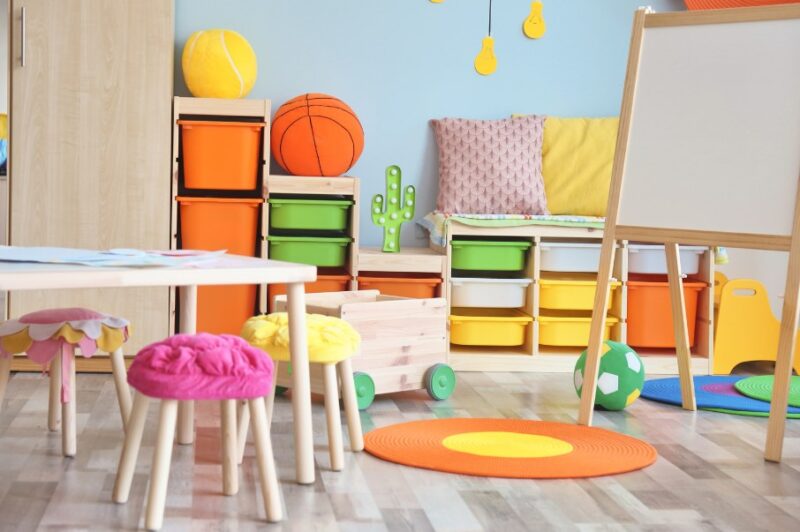
In a preschool classroom, learning centers are like magical realms where young minds enter the exciting adventures of discovery. Each center is thoughtfully designed to nurture specific aspects of a child’s development.
Here’s a closer look at some of the most common and enchanting learning centers you’ll find.
Block Area: Building Foundations for the Future
What it Offers: The block area is a bustling hub of creativity and engineering. Here, children immerse themselves in the world of spatial relationships, problem-solving, and teamwork as they construct intricate structures using colorful blocks.
Learning Benefits: This center not only hones fine motor skills but also cultivates early math and engineering concepts. Through building and rebuilding, children develop resilience in the face of challenges, learning that every toppled tower is an opportunity to build it better.
Dramatic Play Area: Where Imagination Takes Center Stage
What it Offers: The dramatic play area transforms preschoolers into imaginative storytellers and characters. It’s a place where they step into different roles, explore emotions, and act out various scenarios, from running a pretend bakery to taking care of stuffed animals.
Learning Benefits: This center is a treasure trove of social and emotional growth. Children practice essential life skills like communication, empathy, and cooperation.
It’s here that creativity flourishes, allowing young actors to express themselves freely.
Science Area: Unraveling the Mysteries of the Natural World
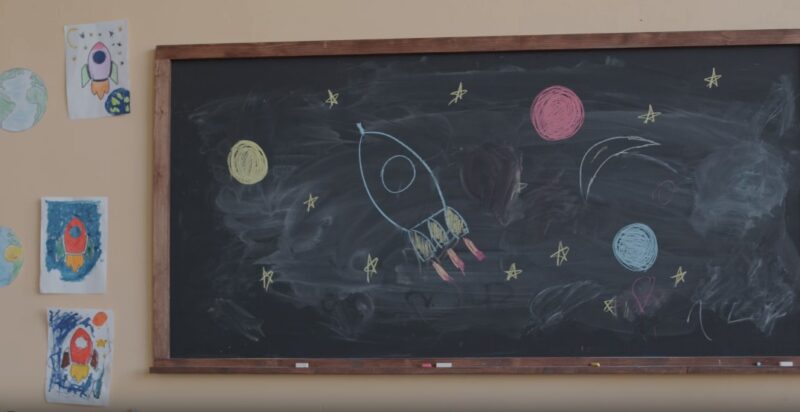
What it Offers: The science area is a wonderland of exploration, where budding scientists dive into hands-on experiments. Children learn about captivating scientific concepts like gravity, magnetism, and the life cycle while conducting experiments and observing the world around them.
Learning Benefits: This center ignites curiosity and a love for inquiry-based learning. Preschoolers develop critical thinking skills, make predictions, and discover the joy of discovery. It lays the foundation for a lifelong appreciation of the natural world.
Library: Where Books Open Portals to New Worlds
What it Offers: The library is a tranquil sanctuary filled with a vast array of books waiting to be explored. Here, children not only discover the joy of reading but also have the opportunity to listen to stories read aloud by their caring teacher.
Learning Benefits: This center is the gateway to a lifelong love of reading. Children enhance their language skills, expand their vocabulary, and stimulate their imaginations.
It’s a place where literary adventures come to life, sparking a passion for books that can last a lifetime.
Art Area: Crafting Expressions of Creativity
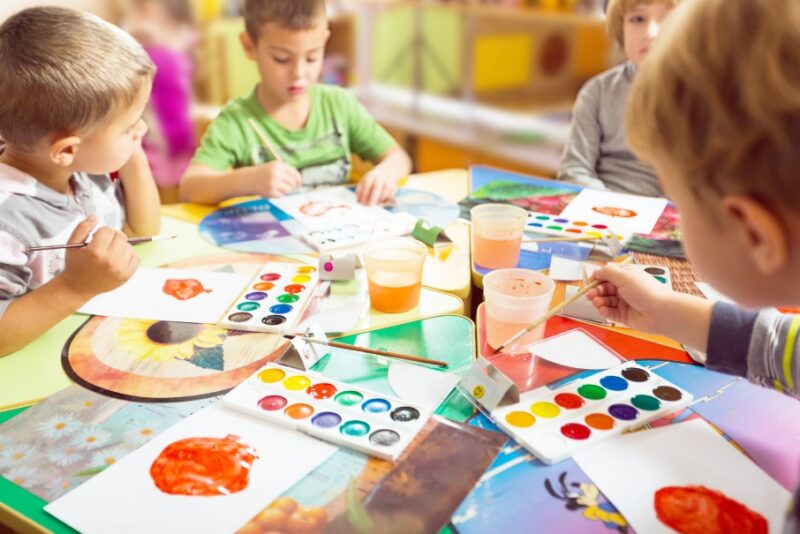
What it Offers: The art area is a colorful haven where young artists unleash their creativity. Children experiment with different art techniques and materials, creating their own unique masterpieces.
Learning Benefits: This center fosters self-expression, fine motor skills, and an appreciation for aesthetics. Through art, children learn to communicate their emotions and ideas visually, discovering the boundless possibilities of self-expression.
Tips for Creating a Well-Structured Space
In the delicate tapestry of early childhood education, the structure is the thread that weaves together a seamless and enriching experience for young learners. Here are some indispensable tips for creating a well-structured preschool classroom that provides a nurturing environment for growth and development.
- Create a Predictable Routine: The Anchor of Security
- Children Thrive on Predictability: The foundation of a well-structured preschool classroom lies in a predictable routine. Children flourish when they know what to expect. Craft a daily schedule that encompasses all essential activities, including free playtime, group gatherings, outdoor adventures, and snack breaks.
- The Benefit of Routine: A consistent routine not only instills a sense of security but also helps children develop valuable time-management skills. They learn the order of activities and anticipate transitions, fostering a sense of comfort and readiness.
- Provide Clear Expectations: Guiding Little Explorers
- Setting the Stage for Success: Communication is key. Let children know what is expected of them in each learning center and during group activities. For instance, convey the importance of sharing blocks, listening quietly during storytime, or using gentle hands during play.
- Empowering Responsibility: Clear expectations empower children to take responsibility for their actions and interactions. It helps them understand the boundaries and guidelines of behavior, promoting a harmonious and respectful classroom environment.
- Offer a Variety of Activities: The Spice of Learning
- Learning Through Diversity: Children are like sponges, absorbing knowledge and skills through a multitude of experiences. Ensure your classroom offers a diverse array of learning centers, each catering to different facets of development. Also, diversify your group activities to keep children engaged and eager to learn.
- Cultivating Well-Roundedness: Varied activities foster well-rounded development. From art and sensory play to science exploration and dramatic role-play, children have the opportunity to discover their interests and talents, building a strong foundation for future learning.
- Be Flexible: Navigating the Unexpected
- Embrace Adaptability: Flexibility is a vital trait for any preschool educator. Recognize that things may not always go according to plan, and be ready to adjust your routine as needed. Whether it’s accommodating unexpected interruptions or allowing extra time for a captivating learning moment, adaptability ensures that children’s unique needs are met.
- Learning Through Change: Being flexible not only models adaptability for young learners but also teaches them valuable life skills. It shows them that change is a natural part of life and can lead to exciting new opportunities.
In the realm of preschool education, a well-structured classroom is the canvas upon which young minds paint their early educational experiences. By creating a predictable routine, setting clear expectations, offering diverse activities, and embracing flexibility, you provide children with a safe and nurturing environment where they can thrive, learn, and grow into confident, capable individuals.
It’s a journey of discovery, and as their guide, you play a pivotal role in shaping their bright futures. A well-structured preschool classroom is essential for fostering a nurturing and educational environment for our youngest learners.
FAQ
How does the block area support early math skills in preschoolers?
The block area helps preschoolers develop early math skills by engaging them in activities like counting, sorting, and recognizing shapes and sizes. Building with blocks also introduces concepts of symmetry and balance, foundational for understanding basic geometry.
Q: Can dramatic play in preschool influence future social skills?
Yes, dramatic play significantly influences the development of future social skills. It allows children to practice communication, understand different perspectives, and develop empathy, which are crucial for building healthy social relationships.
Q: Why is the science area important in a preschool classroom?
The science area is important because it encourages curiosity, observation, and critical thinking. Engaging in simple experiments and exploring natural phenomena help children understand basic scientific concepts and develop a love for learning about the world around them.
Q: How does storytime in the library center benefit language development?
Storytime in the library center enhances language development by exposing children to new vocabulary, sentence structures, and storytelling techniques. Listening to stories also improves their listening comprehension and narrative skills.
Q: What role does the art area play in emotional development?
The art area plays a significant role in emotional development by providing a space for self-expression and creativity. It allows children to communicate feelings and experiences through art, fostering emotional intelligence and self-awareness.
Q: How does outdoor time contribute to a preschooler’s physical development?
Outdoor time is crucial for a preschooler’s physical development as it promotes gross motor skills through activities like running, jumping, and climbing. It also enhances hand-eye coordination, balance, and spatial awareness, contributing to overall physical health and development.
